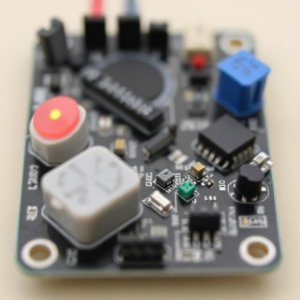Sensors and Modules in Electronics
Sensors and modules are devices that detect and measure various physical properties and send the data to a microcontroller or other devices. Here’s a simple explanation of some common ones:

1. Temperature Sensor (e.g., DHT11, DHT22)
- What it is: A sensor that measures temperature.
- How it works: It senses the temperature around it and converts that information into an electrical signal that can be read by a microcontroller.
- Common use: Weather stations, home automation systems, or temperature monitoring.
2. Humidity Sensor (e.g., DHT11, DHT22)
- What it is: A sensor that measures humidity (the amount of moisture in the air).
- How it works: Similar to temperature sensors, it detects humidity levels and converts the data into a readable signal.
- Common use: Weather monitoring, greenhouse controls, and air conditioning systems.
3. Motion Sensor (e.g., PIR sensor)
- What it is: A sensor that detects movement.
- How it works: It uses infrared light to detect motion. When something moves in its range, the sensor triggers a response.
- Common use: Security systems, automatic lights, and motion-activated devices.
4. Light Sensor (e.g., LDR or Photoresistor)
- What it is: A sensor that detects light intensity.
- How it works: It changes its resistance based on the amount of light falling on it. The less light, the higher the resistance.
- Common use: Automatic lighting systems, light-sensitive gadgets, or ambient light measurement.
5. Ultrasonic Sensor (e.g., HC-SR04)
- What it is: A sensor that measures distance using sound waves.
- How it works: It sends out an ultrasonic wave and measures how long it takes to bounce back from an object. This helps determine the distance to the object.
- Common use: Distance measuring, obstacle detection for robots, or parking sensors.
6. Gas Sensor (e.g., MQ series)
- What it is: A sensor that detects gases in the environment, such as carbon monoxide or methane.
- How it works: It detects the concentration of gases in the air by measuring changes in the sensor’s resistance.
- Common use: Safety systems, air quality monitors, or gas leak detection.
7. Accelerometer/Gyroscope (e.g., MPU-6050)
- What it is: A sensor that measures acceleration (movement) and rotation (orientation).
- How it works: The accelerometer detects changes in speed or position, while the gyroscope measures rotation. Together, they can track motion and orientation.
- Common use: In gaming controllers, fitness trackers, and navigation systems.
8. Touch Sensor
- What it is: A sensor that detects when you touch it.
- How it works: It uses conductive materials to sense when the human body (which is electrically conductive) touches it.
- Common use: Touchscreens, touch-sensitive buttons, or interactive devices.
9. IR Receiver/Emitter
- What it is: A sensor that uses infrared light for communication.
- How it works: The emitter sends out infrared light, and the receiver detects it. The combination allows devices to communicate, like remote controls.
- Common use: TV remotes, robot communication, and other wireless controls.
10. Distance Sensor
- What it is: A sensor used to measure the distance between the sensor and an object.
- How it works: Similar to ultrasonic sensors, it sends out a signal (laser, infrared, or sound) and measures the time it takes to bounce back, calculating the distance.
- Common use: Robots, drones, and measurement tools.
11. Heart Rate Sensor (e.g., Pulse sensor)
- What it is: A sensor that measures your heart rate.
- How it works: It detects the blood flow through your skin and uses that information to calculate your heart rate.
- Common use: Fitness trackers, medical monitoring, and health devices.









